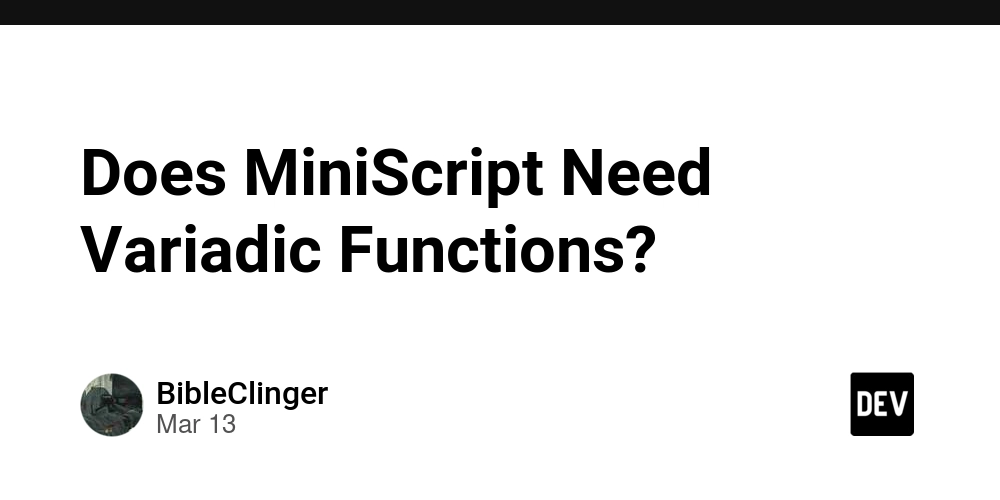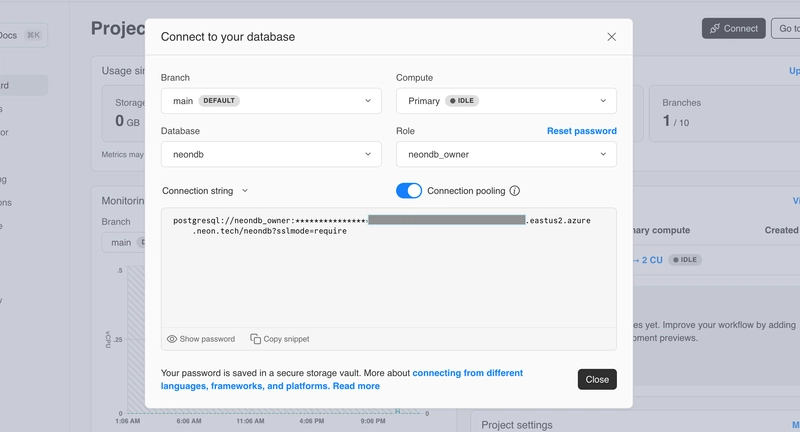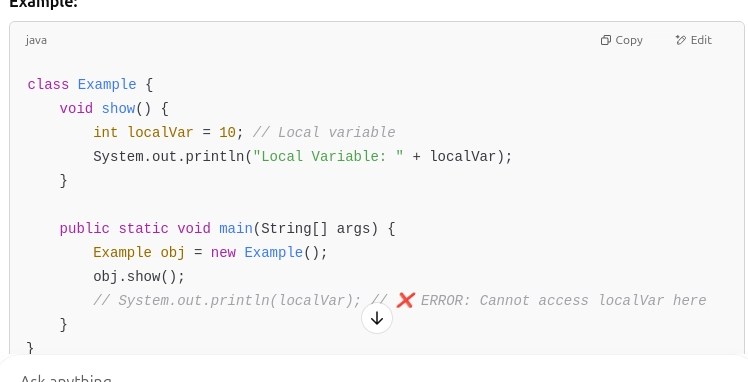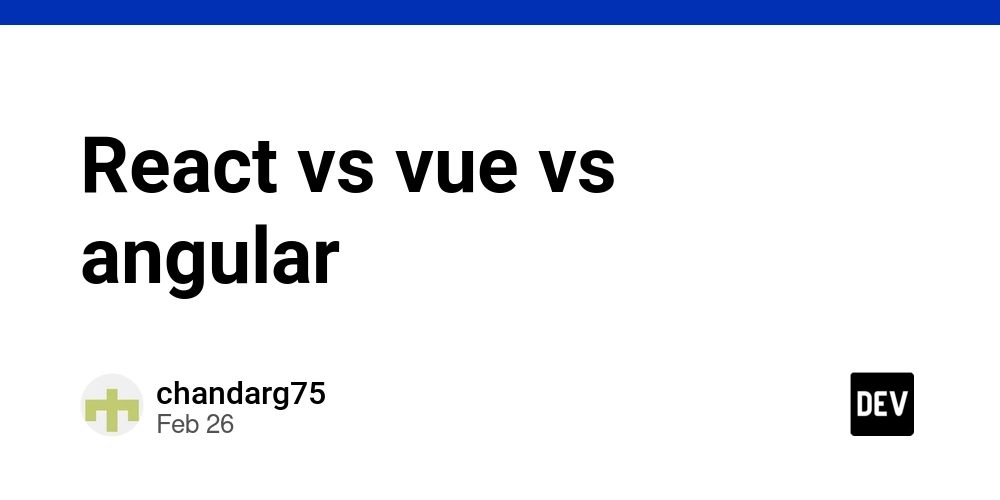Does MiniScript Need Variadic Functions?
A relatively common question asked at the MiniScript Discord is about variadic functions and why MiniScript lacks this feature. Variadic Functions First of all, what even is a "variadic function?" This is a function that takes a variable number of arguments. For those familiar with C, the standard library function printf is such a function. To a C newbie's surprise, the actual function signature of C's printf is int printf ( const char * format, ... ); The ellipsis (the three dots) represent an unknown number of arguments. You can print as many ints, floats, chars, or char *'s, etc. that you would like in one function call. Why not in MiniScript? What new MiniScript programmers are usually looking for is a way to process an unknown number of elements. They think variadic functions are the way of solving this, but let's reconsider such problems. Let's say you have a function that needs to accept an X and a Y coordinate, and then optionally process an unknown amount of numbers. One solution is to write a function with three arguments. The first two can be Numbers, and the last one can be a list. For example: f = function(x, y, arg_list) // arg_list is expected to be a list end function This function f can be called like this, assuming the list is already known: f 102, 215, [5, 6, 10, 4, 2, 6] You can create the list directly inside the function call as shown above. Such a list can also be obtained at runtime. The simplicity is here. Not only don't we need to fiddle with an unknown amount of arguments, but the question should be -- why would we want to do so when given the above? Maps as Arguments Let's say you're building a complicated GUI toolkit for Mini Micro. You want other programmers to be able to use it, so you are making an API. You want a complex function called createWindow that takes in all sorts of properties, such as the width, height, and title of the window in question. Do we need a whole bunch of arguments to accomplish this? Not necessarily. We can use a Map instead to hold our properties. Although there are probably much better ways of implementing the guts of the function, this is one incredibly straightforward way to write it: createWindow = function(properties) if properties.hasIndex("title") then // set title end if if properties.hasIndex("width") then // set width end if if properties.hasIndex("height") then // set height end if end function This can be called like this by users of your API: createWindow { "title":"My Window", "width":320, "height":240 } The map can be hardcoded or built dynamically at runtime. Easy! Benefits of Maps as Arguments Now imagine there is a team using your GUI toolkit, and they report back to you that while they love the API, they would like the ability to change the color of the title bar. You agree that this is a needed feature. You can add this in fairly easily, and the function becomes this: createWindow = function(properties) if properties.hasIndex("title") then // set title end if if properties.hasIndex("width") then // set width end if if properties.hasIndex("height") then // set height end if if properties.hasIndex("title_color") then // set title bar color end if end function Here's a serious benefit of this design: your function signature didn't change. It still expects the same number of arguments. This means all of the legacy code already written will still work exactly as before! Interestingly enough, new code for the new version of your toolkit should still run on the old version simply because your function ignores entries in the map that it doesn't recognize! If every property needed its own argument, this could be a nightmare for both you as the developer of this GUI toolkit as well as the users of your API. Conclusion Now obviously these examples are contrived, and may not be the best way of implementing GUI code, but the design pattern of using lists and maps in place of variadic arguments has been demonstrated to be incredibly useful within the design philosophy of MiniScript.

A relatively common question asked at the MiniScript Discord is about variadic functions and why MiniScript lacks this feature.
Variadic Functions
First of all, what even is a "variadic function?" This is a function that takes a variable number of arguments.
For those familiar with C, the standard library function printf is such a function. To a C newbie's surprise, the actual function signature of C's printf is int printf ( const char * format, ... ); The ellipsis (the three dots) represent an unknown number of arguments. You can print as many ints, floats, chars, or char *'s, etc. that you would like in one function call.
Why not in MiniScript?
What new MiniScript programmers are usually looking for is a way to process an unknown number of elements. They think variadic functions are the way of solving this, but let's reconsider such problems.
Let's say you have a function that needs to accept an X and a Y coordinate, and then optionally process an unknown amount of numbers. One solution is to write a function with three arguments. The first two can be Numbers, and the last one can be a list. For example:
f = function(x, y, arg_list)
// arg_list is expected to be a list
end function
This function f can be called like this, assuming the list is already known:
f 102, 215, [5, 6, 10, 4, 2, 6]
You can create the list directly inside the function call as shown above. Such a list can also be obtained at runtime. The simplicity is here. Not only don't we need to fiddle with an unknown amount of arguments, but the question should be -- why would we want to do so when given the above?
Maps as Arguments
Let's say you're building a complicated GUI toolkit for Mini Micro. You want other programmers to be able to use it, so you are making an API. You want a complex function called createWindow that takes in all sorts of properties, such as the width, height, and title of the window in question. Do we need a whole bunch of arguments to accomplish this? Not necessarily. We can use a Map instead to hold our properties.
Although there are probably much better ways of implementing the guts of the function, this is one incredibly straightforward way to write it:
createWindow = function(properties)
if properties.hasIndex("title") then
// set title
end if
if properties.hasIndex("width") then
// set width
end if
if properties.hasIndex("height") then
// set height
end if
end function
This can be called like this by users of your API:
createWindow { "title":"My Window", "width":320, "height":240 }
The map can be hardcoded or built dynamically at runtime. Easy!
Benefits of Maps as Arguments
Now imagine there is a team using your GUI toolkit, and they report back to you that while they love the API, they would like the ability to change the color of the title bar. You agree that this is a needed feature. You can add this in fairly easily, and the function becomes this:
createWindow = function(properties)
if properties.hasIndex("title") then
// set title
end if
if properties.hasIndex("width") then
// set width
end if
if properties.hasIndex("height") then
// set height
end if
if properties.hasIndex("title_color") then
// set title bar color
end if
end function
Here's a serious benefit of this design: your function signature didn't change. It still expects the same number of arguments. This means all of the legacy code already written will still work exactly as before! Interestingly enough, new code for the new version of your toolkit should still run on the old version simply because your function ignores entries in the map that it doesn't recognize! If every property needed its own argument, this could be a nightmare for both you as the developer of this GUI toolkit as well as the users of your API.
Conclusion
Now obviously these examples are contrived, and may not be the best way of implementing GUI code, but the design pattern of using lists and maps in place of variadic arguments has been demonstrated to be incredibly useful within the design philosophy of MiniScript.













































































































































































![[The AI Show Episode 142]: ChatGPT’s New Image Generator, Studio Ghibli Craze and Backlash, Gemini 2.5, OpenAI Academy, 4o Updates, Vibe Marketing & xAI Acquires X](https://www.marketingaiinstitute.com/hubfs/ep%20142%20cover.png)


























































































































![[FREE EBOOKS] The Kubernetes Bible, The Ultimate Linux Shell Scripting Guide & Four More Best Selling Titles](https://www.javacodegeeks.com/wp-content/uploads/2012/12/jcg-logo.jpg)



![From drop-out to software architect with Jason Lengstorf [Podcast #167]](https://cdn.hashnode.com/res/hashnode/image/upload/v1743796461357/f3d19cd7-e6f5-4d7c-8bfc-eb974bc8da68.png?#)






































































































.png?#)





.jpg?#)































_Christophe_Coat_Alamy.jpg?#)








































































































![Rapidus in Talks With Apple as It Accelerates Toward 2nm Chip Production [Report]](https://www.iclarified.com/images/news/96937/96937/96937-640.jpg)







































































































































